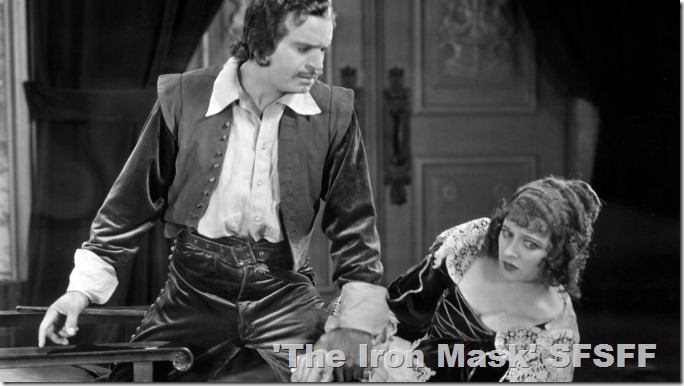
Douglas Fairbanks and Marguerite de la Motte in “The Iron Mask.”
Returning for the 26th time, the San Francisco Silent Film Festival offered a fascinating and powerful diversity of programming and music at its recently concluded Festival. Full of dramatic performances and outstanding camerawork in films mostly produced during the 1920s, many also featured strong women at the core of the story.
Several unintentional themes popped up during the weekend, including fires, floods, perverse relationships, surrealism, real locations, misunderstandings, and how popular Josephine Crowell was during the period.
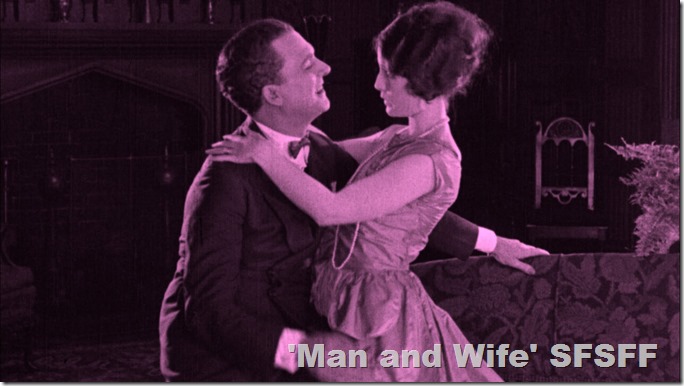
Douglas Fairbanks’ 1928 swashbuckling “The Iron Mask” kicked off proceedings Wednesday evening with a rousing salute and romantic valedictory to the art and entertainment of silent films. Combining humor, action, and poignant emotions, the movie reunited actors from Fairbanks’ earlier “The Three Musketeers” pondering “the other one.” Fairbanks offered his usual charismatic elan opposite such memorable character actors as the otherworldly Nigel de Brulier, Vera Lewis, and the watchful Belle Bennett. The Guenther Buchwald Ensemble provided a suitably uptempo, percussive score.
The always absorbing Tales of the Archives led off Thursday morning, offering three intriguing lectures and presentations on diverse areas of silent film. Nicholas White described the little known history of contraption artists providing sound effects for silent films, offering a live sample of how these artifacts actually were employed. Animation history Mindy Johnson presented the little known work of female artists in early animation, especially Bessie Mae Kelly, the first known woman animator in the United States always looking for an opportunity to better her work. Kyle Westphal of the Chicago Film Society relayed the process of how the group researched the rarity and history of the 1927 film “Doll Messengers of Friendship”, made in reaction to Japanese Americans suffering under racism from the Exclusion Act.
Following this thoughtful program, a doublet of films examining perverse relationships followed. A surrealist combination of “The Hands of Orlac,” Tod Browning, and “The Cabinet of Dr. Caligari,” the darkly humorous 1924 German marionette short “The Great Love of a Little Dancer” provided a macabre wake-up call. Entertaining, horrific, and creative, the film examined the misogynist actions of a stalking doctor against a gentle little dancer. Young Will Lewis offered a pleasing, period-like uptempo accompaniment.
Continuing the them of unhealthy relationships, the 1923 Norma Shearer film “Man and Wife” screened, a story of strange family values in which Shearer is given little to do but look luminous. Growing up in a strictly religious household, she runs away to freedom in the big city and marries Dr. Howard Fleming but mysteriously dies. When Fleming falls in love and unknowingly marries her younger sister Dora, confusion ensues. Wayne Barker provided a nice uptempo score keeping the somewhat turgid story flowing.
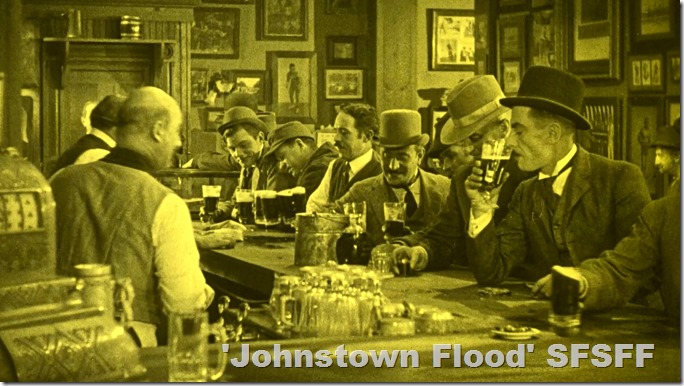
The newly restored 1926 movie “The Johnstown Flood” won the afternoon, a tale of nefarious industrialists and falling apart infrastructure just waiting for the perfect time to erode. Beautifully restored with tints and toning, the lovely print highlighted excellent performances by a tender teenage Janet Gaynor, sympathetic Max Davidson, and a manly George O’Brien and especially state-of-the arts special effects of the day revealing the terrible destruction of floods and fire to innocents and vulnerable coming at the hands of venal, scheming plotters. Mont Alto Motion Picture Orchestra’s rich, emotional score added poignancy to proceedings.
Taking things totally in the opposite direction, the 1926 restored “Up in Mabel’s Room” offered a laugh out loud, saucy look at flirtation and sexuality in this effervescent romantic comedy, aided immeasurably by the wonderful bossa nova/jazzy score provided by Guenther Buchwald and his emsemble. A sparkling Marie Prevost decides to seduce her recently divorced husband Harrison Ford, with cheeky double entendres, hilarious hi jinks, and impeccable timing leading the way. Paul Nicholson, the conspiratorial mining manager in “The Johnstown Flood,” plays a clueless and goofy businessman.
I missed the 1925 “Stella Maris” that night, returning the next morning for Karl Brown’s luminous almost documentary like 1927 film “Stark Love,” shot among the simple mountain people in the distant, hardscrabble Applachia area of North Carolina. Newcomers Helen Munday and Forrest James touchingly bring these characters to life, Munday with an intense passion and James with a gentle underplaying as they deal with what now could be called grooming and domination of women, considered merely slaves in the misogynistic culture. Former cameraman Brown composes some beautiful, lyrical images of striking but dangerous nature. Stephen Horne’s almost folk-like accompaniment adds understated, gentle emotion to this simple but heartfelt story.
A 1924 silent version of the “Beverly Hillbillies” but set in northeast Texas towns of Ranger and Dallas, the 1924 “Flowing Gold” plays a little sleight of hand when introducing Crauford Kent and the manly Milton Sills before righting conspiracy and scheming with strength and ethics. The story starts slowly and builds, with early humor a la the Clampetts giving way to rousing fires and flood sequences, helped immeasurably by the San Francisco Silent Film Festival’s beautiful restored print with its tints and tones. Milton Sills almost plays himself, demonstrating his sophisticated, artistic nature and cultured palate and Anna Q. Nilsson brings a hint of toughness to the independent, strong and questioning daughter. Josephine Crowell made her first appearance in the festival as a loving but vulgar naif trying to handle wealth. Utsav Lai’s score started off slowly before evolving into lilting energy.
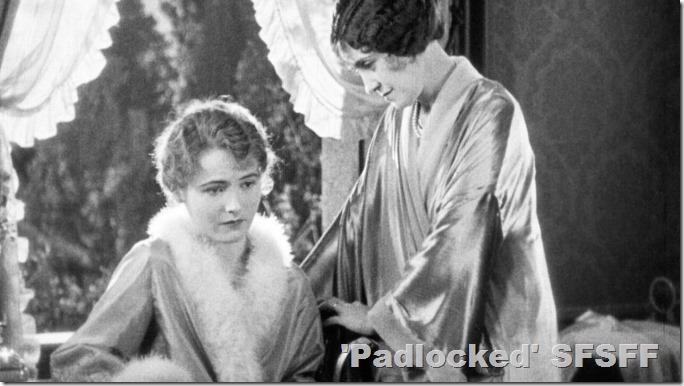
Another gorgeously restored print by the SFSFF highlighting the famed James Wong Howe’s magnificent camerawork, the 1926 “Padlocked” sees its story jump around from pillar to post, with meddling do-gooder Noah Beery goaded into overbearing, uncaring morality by hypocritical, sanctimonious Helen Jerome Eddy, sending his innocent, sweet daughter Lois Moran into the harrowing clutches of nuns at a horrific poorhouse before everything is resolved prettily. Howe shows his mastery of lighting from, gorgeous, upscale lifestyle to the claustrophobic, shadowy world of crucifix-filled “work homes” echoing the lighting of Erich von Stroheim. Pioneering Florence Turner is given little to do in a film which features early appearances by Richard Arlen and Douglas Fairbanks Jr., while Louise Dresser does subtle, powerful work with a small part. This shows Allan Dwan could give believability to melodrama as well as rousing energy to Fairbanks’ swashbucklers. Stephen Horne’s luscious score combines uptempo period rhythm with poignant poetic chords.
After skipping the always humorous Buster Keaton and his comic take on D. W. Griffith’s “Intolerance” with his hilarious “Three Ages,” I found myself swept up in the powerful atmosphere and drama of the 1919 Sessue Hayakawa’s “The Dragon Painter,” once again in a masterful restoration by the SFSFF, with added footage and telling tints. Produced by Hayakawa and featuring an almost all-Asian cast, the film reveals the intense Hayakawa inspired by the lovely Tsuru Aoki, his actual wife, to forge almost mythological art, possibly featuring actual artwork by her foster father, Toshio Aoki. The film is positively gorgeous, displaying elegant tints to dramatic silhouetting and shadows to majestic landscapes, including Coronado’s exquisite Japanese tea garden to the spectacular vista of Yosemite’s El Capitan and Half Dome. The Masaru Koga Ensemble’s evocative, dreamy accompaniment captured the story’s mysticism and romance.
Needing some rest, I skipped a couple of programs before attending the sophisticated, romantic 1925 German version of “A Midsummer Night’s Dream.” Playful, enchanting, and gorgeous, the film combines spectacular special effects featuring multiple double exposures of fanciful, fantastic sprites, gnomes, and fairies with tongue in cheek humor and lilting romance. Luscious production and costume design enhance bewitching, romantic sequences. Surrealist touches like female Amazons pulling tissues out of their breastplates and witty titles enhance the upscale flavor. UCLA’s restoration is perfectly gorgeous, augmented by the Sascha Jacobsen Quartet’s lilting, poetic score.
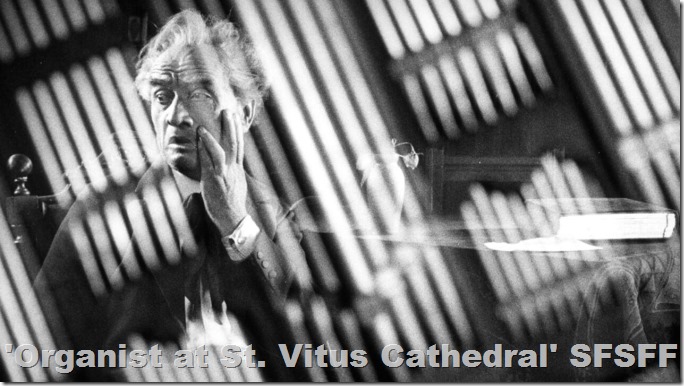
Czar of Noir Eddie Muller’s thoughtful, thought provoking introduction perfectly set up the very noirish “The Organist at St. Vitus Cathedral,” a 1929 Czech film balancing darkness and innocence in its story of blackmail, threat, and emotional devastation counterbalanced by innocence, devotion, and atonement. Dark and brooding organist finds his life turned upside down, and the film builds a foreboding, desperate world to match his powerful, throbbing organ playing. Cinematography is topnotch, blending documentary like footage of Prague with dreamy, evocative shots of religious devotion. Maud Nelissen adds harrowing organ chords and dark rhythms to her powerful accompaniment.
Later that evening, the humorous but poignant 1922 Jacques Feyder film “Crainquebille” sympathetically captures how a sweet, innocent vegetable peddler finds his life turned upside down after a silly misunderstanding. Lovely camerawork combining real documentary footage of working class people with poetic compositions helps reveal the devastating degradation of the simple man’s life after his former clients judgmentally turn against him. Comic actor Maurice de Feraudy brings touching poignancy to the peddler while young Jean Forest gives a luminous performance as a loving kid newspaper seller who rescues the troubled seller. Stephen Horne and his ensemble provide a touching, folksy, understated touch which enhances the simple but moving story.
Before leaving the Festival, I attended the jaunty Edward Everett Horton show, featuring three of the hilarious 1927-1928 shorts lovingly restored and released on home video through crowdfunding by multi-talented accompanist/producer Ben Model. Produced by Harold Lloyd and employing his staff during a quiet period for Lloyd, these shorts demonstrate the inimitable personality and timing of the nervous nelly, all without hearing his distinctive voice. Josephine Crowell appears for the third time during the Festival, this time as an overbearing, fuddy duddy mother who gets played by the busy Eddie. Horton plays everything from a stills photographer to a henpecked husband to a first time fox hunter, overcoming everything with a telling double take and a twinkle in his eye. The shorts look great after their digital cleanup, and Model provides a rollicking, uptempo underbeat that keeps the action flowing humorously along.
The San Francisco Silent Film Festival provides an enriching, enveloping weekend of silent films for both veterans and newbies alike, demonstrating the art, power, and emotion of these moving films, enhanced by poetic and dramatic live accompaniment that truly shows how “true art transcends time.”


We hope TCM gets the clue and shows some of these. Silents can be shockingly good, with better acting, camera work and more elaborate sets and costumes than many 30s talkies
LikeLike